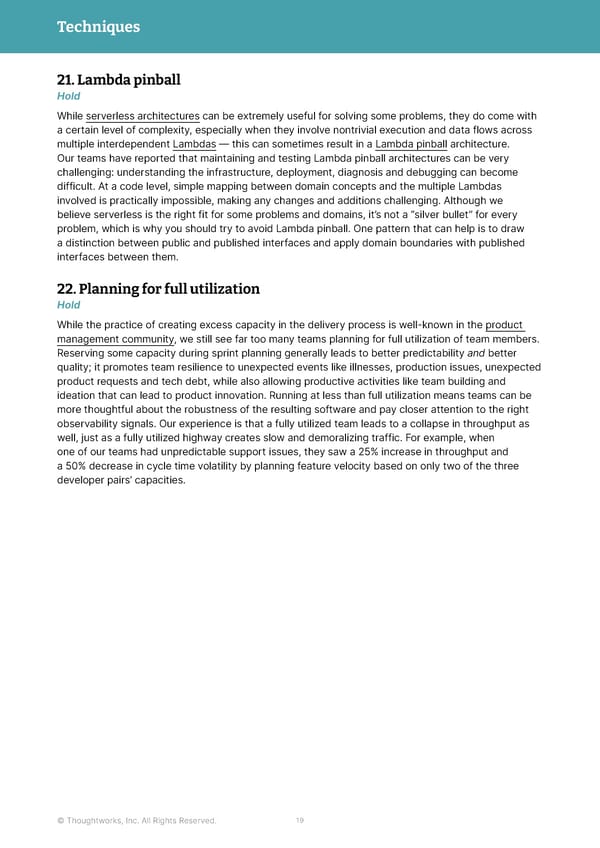Techniques 21. Lambda pinball Hold While serverless architectures can be extremely useful for solving some problems, they do come with a certain level of complexity, especially when they involve nontrivial execution and data flows across multiple interdependent Lambdas — this can sometimes result in a Lambda pinball architecture. Our teams have reported that maintaining and testing Lambda pinball architectures can be very challenging: understanding the infrastructure, deployment, diagnosis and debugging can become difficult. At a code level, simple mapping between domain concepts and the multiple Lambdas involved is practically impossible, making any changes and additions challenging. Although we believe serverless is the right fit for some problems and domains, it’s not a “silver bullet” for every problem, which is why you should try to avoid Lambda pinball. One pattern that can help is to draw a distinction between public and published interfaces and apply domain boundaries with published interfaces between them. 22. Planning for full utilization Hold While the practice of creating excess capacity in the delivery process is well-known in the product management community, we still see far too many teams planning for full utilization of team members. Reserving some capacity during sprint planning generally leads to better predictability and better quality; it promotes team resilience to unexpected events like illnesses, production issues, unexpected product requests and tech debt, while also allowing productive activities like team building and ideation that can lead to product innovation. Running at less than full utilization means teams can be more thoughtful about the robustness of the resulting software and pay closer attention to the right observability signals. Our experience is that a fully utilized team leads to a collapse in throughput as well, just as a fully utilized highway creates slow and demoralizing traffic. For example, when one of our teams had unpredictable support issues, they saw a 25% increase in throughput and a 50% decrease in cycle time volatility by planning feature velocity based on only two of the three developer pairs’ capacities. © Thoughtworks, Inc. All Rights Reserved. 19
 Immersive Experience — Vol 28 | Thoughtworks Technology Radar Page 18 Page 20
Immersive Experience — Vol 28 | Thoughtworks Technology Radar Page 18 Page 20